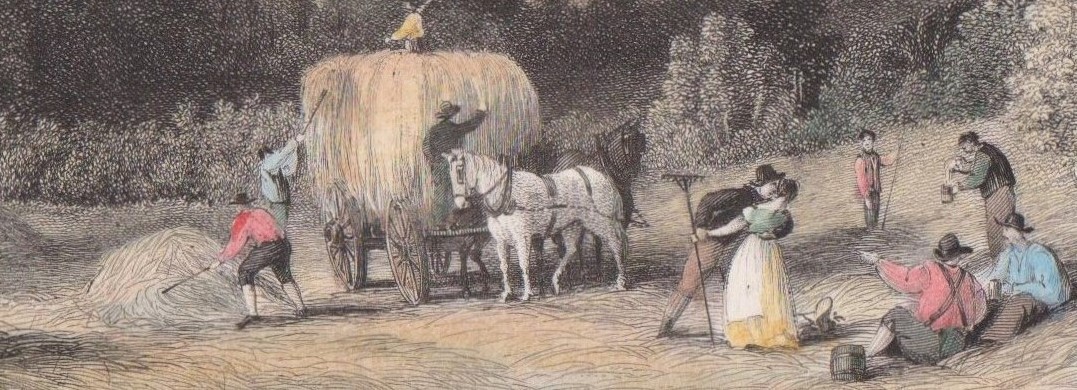Arthur and Edward Cherry are well known for their topographical etchings of English scenes, but their careers began in a family photography shop in St Albans. They were the sons of Edward Cherry (1859-1934), who was born in Wednesbury in Staffordshire. He married a Yorkshire dressmaker Ann Kirby Phillips in 1880 and two years later they had moved to Barrow-in-Furness where their first son Frank was born.… Read the rest

This first ever monthly magazine The Gentleman’s Magazine was published by the printer Edward Cave in 1731, and ran for nearly 200 years until its demise in 1922. It had contributions from poets, antiquarians, clergymen, politicians and topographers and its history pages often contained lively discussions.
 The Dorset dialect poet William Barnes contributed several articles about the history and customs of the county and Cave’s friend Samuel Johnson commented on topics for the ‘educated public’. … Read the rest
The Dorset dialect poet William Barnes contributed several articles about the history and customs of the county and Cave’s friend Samuel Johnson commented on topics for the ‘educated public’. … Read the rest


The print published in 1830, shows a view from the south of Winchester looking northward across the water meadows towards the cathedral. In the foreground the River Itchen flows through St Catherine’s Lock – the top lock of the now disused Winchester to Southampton canal.





The original wooden medieval bridge, built to cross the Avon in Bristol, comprised four arches, and its two sides had five storey high dwellings that jettied over the edge of the bridge. In the early eighteenth century, the City of Bristol expanded dramatically, and this entrance from the London direction became highly congested, so the Bristol MP Sir Jarrit Smyth called for the construction of a new bridge.… Read the rest
John Britton (1771-1857) the antiquarian and editor, is most famous for his work The Beauties of England and Wales, which he wrote in collaboration with his friend Edward Wedlake Brayley (1773-1854). Their first work was published in Salisbury in 1801, when they were commissioned to work on an account of the County of Wiltshire. This became the start of the Beauties series – or Original Delineations, Topographical, Historical and Descriptive of Each County.… Read the rest


In the late C10th, a Benedictine monastery was founded by St Wulfstan, beside the Abbey Church of St Mary the Virgin in Sherborne. These monastic lands were sold during the Dissolution and re-used in the founding of King Edward’s School in 1550 by Edward VI, as a free grammar school for local boys.
This antique print shows the Abbey building comprising a central structure with two wings.… Read the rest


Cerne Abbey was founded in the C9th and re-founded in the C10th as St Augustine’s Benedictine monastery. It was rebuilt in the C15th – C16th and the Abbot’s Porch was built by the last Abbot Thomas Salmon in 1509 shortly before the Dissolution.
The Tudor porch of three storeys was once the main access to the Hall buildings and the fine two storey oriel window (projecting bay) is carved with animals and the escutcheons of families from the neighbourhood.… Read the rest

